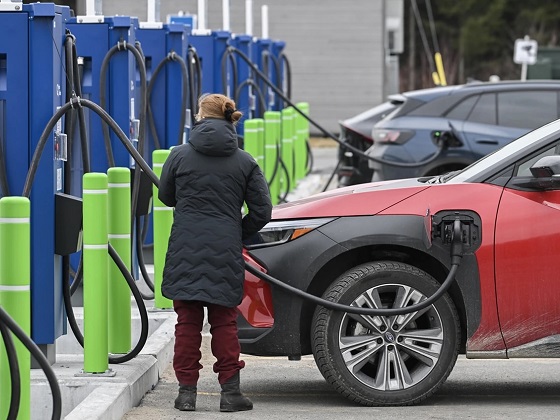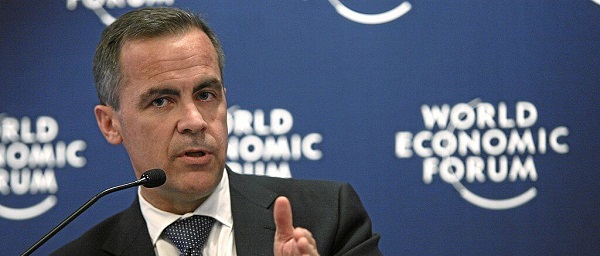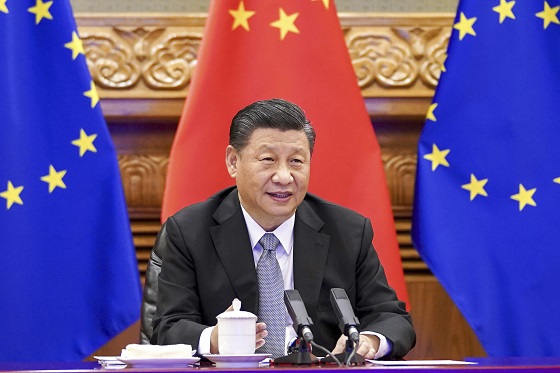Alberta
COASTAL GASLINK PIPELINE PROJECT SETS NEW STANDARD WITH UNPRECEDENTED INDIGENOUS SUPPORT AND PARTICIPATION

COASTAL GASLINK PIPELINE PROJECT SETS NEW STANDARD WITH UNPRECEDENTED INDIGENOUS SUPPORT AND PARTICIPATION
Coastal GasLink (CGL) is a 670-kilometre pipeline that will deliver natural gas from northeastern British Columbia to LNG Canada’s export terminal in Kitimat, B.C. As part of Coastal GasLink’s commitment to ensuring Indigenous and local communities are able to fully benefit from the construction and operation of the pipeline, we successfully negotiated 20 project and community agreements that clearly demonstrate our commitment to their communities for the long-term.
The Coastal GasLink Pipeline Project has set a new standard for Indigenous engagement and participation in critical energy infrastructure project development and construction. Since the project was first announced in 2012, thousands of hours have gone into listening and collaborating with Indigenous and local communities to create a project that is delivering on environmental and cultural protection, including $1-billion in long-term economic benefits through jobs and contracting opportunities.
“Integrity, collaboration and respect are at the heart of Coastal GasLink’s commitment to creating lasting opportunities for Indigenous communities in northern British Columbia and we’re proud of the relationships we’ve built,” said Tiffany Murray, Coastal GasLink’s director of Indigenous Relations.
“There is unprecedented support for this pipeline project from Indigenous and local communities, including agreements with the 20 elected First Nations along the right of way. Our engagement started at the early conceptual phase and continues today,” added Murray. “We are committed to engaging and working collaboratively on the project as it moves through construction and into operations.”
Coastal GasLink is a 670-kilometre pipeline that will safely deliver natural gas from northeastern B.C. to the LNG Canada liquefaction facility in Kitimat, B.C., connecting clean, sustainability produced Canadian energy to the world and ultimately, playing a critical role in the reduction of global greenhouse gas emissions and air pollution in Asia.
Construction launched in early 2019 following more than six years of rigorous review and environmental assessment. From the beginning, the project team focused on building relationships based on mutual trust and respect by providing meaningful opportunities for participation in project planning and jobs and local contracting prospects for Indigenous and local businesses and their communities.

Photo provided courtesy of TC Energy. Coastal GasLink implemented a Construction Monitoring and Community Liaison Program (CMCL). It provides opportunities for Indigenous members to participate in construction within their traditional territory for the purposes of observing, recording and reporting on implementation of construction activities to their communities.
A milestone moment was marked in June 2018 when leadership from a number of Indigenous groups and Coastal GasLink celebrated the announcement of the commitment for $620 million in contract awards to northern British Columbia Indigenous businesses for the project’s right- of-way clearing, medical, security and workforce accommodations. To date, Coastal GasLink has exceeded its commitments and awarded approximately $720 million in contracts to Indigenous and local businesses.
More than one-third of the field work completed on the project was conducted by Indigenous people and traditional knowledge was considered in its planning and design. The project continues to prioritize Indigenous and local hiring and held 25 Economic Summits along the route in 2018 and 2019 to connect interested job seekers and businesses with potential opportunities. Additionally, a variety of training programs continue to support Indigenous and local trainees and students. To protect Indigenous culture and values along with the environment during project construction, a Construction Monitoring and Community Liaison Program (CMCL) has been launched. The program provides opportunities for Indigenous community members to participate in construction within their traditional territory for the purposes of observing, recording and reporting on implementation of construction activities to their communities. It will continue through construction of the pipeline, which is planned for in-service in 2023.

Photo provided courtesy of TC Energy. Skills training and education is an essential part of Coastal GasLink’s committee to creating an extraordinary legacy. TC Energy invests in skills development and long-term education programs to support Indigenous and local residents and trainees.
Transparency is core to the CMCL program with Indigenous communities by meaningfully participating in the project to monitor the work that is being done. That open, relationship-based approach is something that Coastal GasLink believes is integral to the success of the projec
Harry Bodewitz, a program coordinator who is working closely with CMCL advisors from several Indigenous communities along the project corridor, has seen the value of the program. As construction ramps up, additional CMCL advisors will be brought on to be involved in the program.
“Something might have been planned initially, but once we actually get to the field, that plan may change, or get modified, to make sure it’s done right,” said Bodewitz. “In the CMCL Program, we have an opportunity to observe what’s going on, discuss it and share that with our communities.”
For Mike Gouchie, a CMCL coordinator from Lheidli T’enneh First Nation, the program provides a chance to be out in the field to make sure what matters to his community and neighbouring community CMCL advisors, is at the forefront of the construction program.
“As a CMCL coordinator, I’m able to assist the CMCL advisors to be out in the field with inspectors, construction management and myself to visit sites of interest, to understand the scope of the project in our territories and make sure environmental issues are identified,” he said.
Whether it’s in the field or at the table with First Nation leaders for monthly meetings, Coastal GasLink has involved Indigenous communities every step of the way.

Photo provided courtesy of TC Energy. Coastal GasLink is delivering significant economic benefits to British Columbian families today and for decades to come.
“I’m proud of the relationships we have built and the work we’ve done on this project,” said Murray.
“We believe that by building meaningful, long-term relationships based on trust and integrating feedback into our project, we will create an extraordinary legacy of safety and respect for communities and the environment.”
Background: The Canadian Energy Compendium is an annual Energy Council of Canada initiative which provides opportunity for cross-sectoral collaboration on a topic of shared interest across the Canadian energy sector, produced with the support of Canada’s national energy associations and Energy Council of Canada’s members. The stories contributed to the 2019 edition, Indigenous Energy Across Canada, highlight current conversations celebrating Canada’s dynamic energy sector and encouraging its continuous improvement.
Thanks to Todayville for helping us bring our members’ stories of collaboration and innovation to the public.
Click to read a Foreward from JP Gladu, Chief Development and Relations Officer, Steel River Group; Former President & CEO, Canadian Council for Aboriginal Business

JP Gladu, Chief Development and Relations Officer, Steel
River Group; Former President & CEO, Canadian Council for Aboriginal Business

Jacob Irving, President of Energy Council of Canada
The Canadian Energy Compendium is an annual initiative by the Energy Council of Canada to provide an opportunity for cross-sectoral collaboration and discussion on current topics in Canada’s energy sector. The 2020 Canadian Energy Compendium: Innovations in Energy Efficiency is due to be released November 2020.
Click to read comments about this series from Jacob Irving, President of the Energy Council of Canada.
Alberta
Alberta government records $8.3 billion surplus—but the good times may soon end

From the Fraser Institute
By Tegan Hill
According to last week’s fiscal update, the Smith government recorded a $8.3 billion surplus in 2024/25—$8 billion more than what the government projected in its original 2024 budget. But the good times won’t last forever.
Due largely to population growth, personal income tax revenue exceeded budget projections by $500 million. Business tax revenue exceeded budget expectations by $1.1 billion. And critically, thanks to relatively strong oil prices, resource revenue (e.g. oil and gas royalties) saw a $4.7 billion jump.
The large budget surplus is good news, particularly as it will be used to pay down government debt (which taxpayers must ultimately finance) and to invest for the future. But again, the good times could soon be over.
Recall, the Alberta government incurred a $17.0 billion budget deficit just a few years ago in 2020/21. And it wasn’t only due to COVID—until the recent string of surpluses, the government ran deficits almost every year since 2008/09, racking up significant amounts of debt, which still largely persists today. As a result, provincial government debt interest payments cost each Albertan $658 in 2024/25. Moreover, in February’s budget, the Smith government projected more deficits over the next three years.
Generally, Alberta’s fiscal fortunes follow the price of oil. Over the past decade, for example, resource revenue has been as low as $2.8 billion in 2015/16, while oil prices slumped to $US45.00 per barrel, and as high as $25.2 billion in 2022/23, when oil prices jumped to $US89.69 per barrel.
Put simply, resource revenue volatility fuels Alberta’s boom-and-bust cycle. In 2025/26, the West Texas Intermediate oil price will be a projected $US68.00 per barrel with projected resource revenue falling by $4.9 billion year-over-year.
But oil prices don’t need to dictate Alberta’s fiscal fortune. Indeed, if the Smith government restrains its spending, it can avoid deficits even when resource revenues fall.
There are plenty of ways to rein in spending. For instance, the government spends billions of dollars in subsidies (a.k.a. corporate welfare) to select industries and businesses in Alberta every year despite a significant body of research that shows these subsidies fail to generate widespread economic benefit. Eliminating these subsidies is a clear first step to deliver significant savings.
The budget surplus is undoubtedly positive for Albertans, but the good times could soon come to an end. To avoid deficits and debt accumulation moving forward, the Smith government should rein in spending.
Alberta
Alberta Provincial Police – New chief of Independent Agency Police Service

Sat Parhar has been appointed as the first chief of the Independent Agency Police Service, marking the next step toward a new municipal policing option.
The appointment of a new chief for the Independent Agency Police Service (IAPS) marks the next step in giving municipalities a new option for local policing and builds on the work already underway for the agency to assume the police-like duties currently carried out by the Alberta Sheriffs. The IAPS will empower municipalities to adopt strategies that effectively respond to their specific safety concerns, enhancing public safety across the province.
Chief Parhar brings more than 25 years of policing experience, including senior roles with the Calgary Police Service, most recently as deputy chief. His frontline policing experience and deep understanding of Alberta’s complex and diverse public safety landscape positions him to lead the agency as it takes shape and begins its work as a new municipal policing option, keeping communities safe.
Once operational, the agency will strengthen Alberta’s existing policing model and complement the province’s current police services, which includes the RCMP, Indigenous policing services and municipal police. It will help fill gaps and ensure law enforcement resources are deployed efficiently to meet Alberta’s evolving public safety needs and improve law enforcement response times, particularly in rural communities.
“Appointing Chief Sat Parhar is a key milestone in Alberta’s plan to give municipalities a real choice in how their communities are kept safe. This is about building a modern police service that reflects the priorities of Albertans, strengthens local decision-making, and ensures every corner of our province, especially rural areas, can count on responsive, effective law enforcement. With his decades of experience and deep understanding of Alberta’s policing landscape, he is the right leader to bring this vision to life.”
“This appointment signifies a significant step forward in our efforts to establish a more robust, community-focused policing model that is better equipped to meet the unique needs of our local residents. Under Chief Parhar’s visionary leadership, we are confident that we will develop a modern, efficient police service that not only enhances public safety but also aligns closely with the priorities and values of Albertans. His experience and commitment are vital in shaping an IAPS that is responsive, transparent, and dedicated to fostering trust and collaboration within the community, ultimately ensuring a safer and more connected society for all.”
Chief Parhar’s immediate priorities will be to hire an executive team and commence organizational planning such as developing key recruitment, training and other operational policies. Chief Parhar’s appointment is the first step of many to establishing the IAPS.
“It’s an honour to take on this role and help shape a modern police service built for Alberta. My focus from day one will be on setting high standards for professionalism, building strong relationships with our partners and ensuring this service reflects the needs and priorities of the communities we serve.”
The Independent Agency Police Service was formally created through regulation following the passing of Public Safety Statutes Amendment Act, 2024. The agency will operate as an independent Crown corporation, and will be renamed the Alberta Sheriffs Police Service, with its head office located in Calgary. The IAPS will be operationally independent from the provincial government with civilian oversight, consistent with all police services in Alberta.
“When it comes to policing, municipalities like ours deserve a choice – especially when the current system leaves us disadvantaged simply because of our size. We look forward to learning more about what that alternative will look like once an Alberta police agency is fully established and the options are clear. For us, this is about fairness, sustainability, and ensuring municipalities have access to policing solutions that reflect both their needs and their realities.”
Quick facts
- The regulation establishes the IAPS Provincial Corporation and its governance structure including board of directors, board of director powers, financial responsibilities and accountabilities.
Related news
- Expanding municipal police service options (April 7, 2024)
-

 Crime1 day ago
Crime1 day agoBryan Kohberger avoids death penalty in brutal killing of four Idaho students
-

 International2 days ago
International2 days agoCBS settles with Trump over doctored 60 Minutes Harris interview
-

 Business1 day ago
Business1 day agoWhy it’s time to repeal the oil tanker ban on B.C.’s north coast
-

 Energy1 day ago
Energy1 day agoIf Canada Wants to be the World’s Energy Partner, We Need to Act Like It
-

 Alberta1 day ago
Alberta1 day agoPierre Poilievre – Per Capita, Hardisty, Alberta Is the Most Important Little Town In Canada
-

 MxM News1 day ago
MxM News1 day agoUPenn strips Lia Thomas of women’s swimming titles after Title IX investigation
-

 Business1 day ago
Business1 day agoLatest shakedown attempt by Canada Post underscores need for privatization
-

 Alberta1 day ago
Alberta1 day agoAlberta Provincial Police – New chief of Independent Agency Police Service









